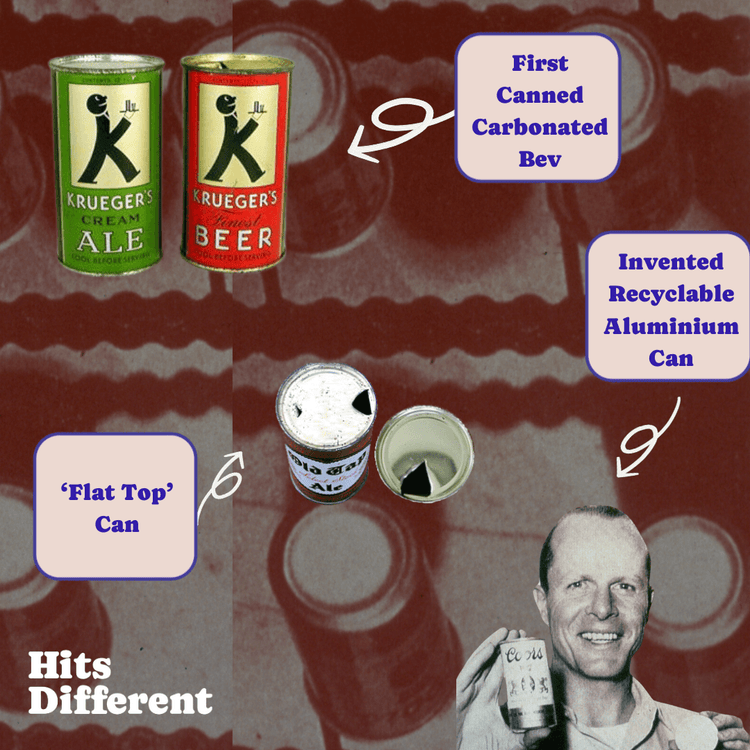Creation Of The Drink Can

Believe it or not, the Le Petit Caporal (Napoleon Bonaparte) is credited as a driving force for the invention of the can and subsequently beverage cans.
The year is 1795 and Napoleon's army is being hampered by starvation and malnutrition from a lack of ability to maintain and store food for extended periods of time.
And so, Napoleon offered a reward for any canny inventor to find a way to preserve large quantities of food.
11 years later, yep that long, in 1806 Nicolas Appert donned the
'Father of Canning' or as we prefer to call him, the 'Can Father' received the 12,000 franc prize for coming up with air tight food preservation or canning as we know it!
Through the following centuries, food canning continued to progress and evolve.
Companies began canning condensed milk, corned beef and heaps more.
Companies began canning condensed milk, corned beef and heaps more.
Fast forward to 1935.
The American Can Company in collaboration with the Gottfried Krueger Brewing Company took the canning game to a liquid level.
Krueger's Cream Ale and Krueger's Finest Beer became the first drinks sold in cans.
Krueger's Cream Ale and Krueger's Finest Beer became the first drinks sold in cans.
The American Can Company had developed a method to create a can that could withstand the pressure of carbonation, and Krueger took a chance on this new packaging method, revolutionising the beer industry.
Now these cans were:
1. Flat topped and needed to be opened with a can piercer/'church key' opener
2. Heavy! They weighed ~110grams compared to the ~15gram cans we have today
3. Left a metallic taste in the beverage - no good
1. Flat topped and needed to be opened with a can piercer/'church key' opener
2. Heavy! They weighed ~110grams compared to the ~15gram cans we have today
3. Left a metallic taste in the beverage - no good
Up until the 50's drinking cans were made of heavy steel. There was also the problem of cans been thrown everywhere, littering the environment, harming wildlife and causing an eye sore for all who passed by.
That was until January 22nd 1959, Bill Coors (Coors brewery chairman), his team of 100 people and $10million worth of trial and error created... drum roll please!
The two-piece recyclable aluminium can!
The two-piece recyclable aluminium can!
Consumers loved it! Drinks tasted better and stayed colder for longer.
Better yet, this marked the dawn of the can recycling revolution. Bill was passionate about the environment and encouraged other beverage manufacturers to get on board. His new design inspired the 'Cash for Cans' initiative that emerged in the following decades.
Then, the can design was refined to include pull tabs. Introduced in 1962 by Ermal Fraze made it easier for thirsty humans to open their drinks without the need for a separate tool. Next time you crack a cold bev, be sure to cheers Ermal!
Later the non-removable ring top we see and crack open our drinks with today was introduced to decrease waste and choking hazards.
There you have it! How the drink can came to be.
References:
